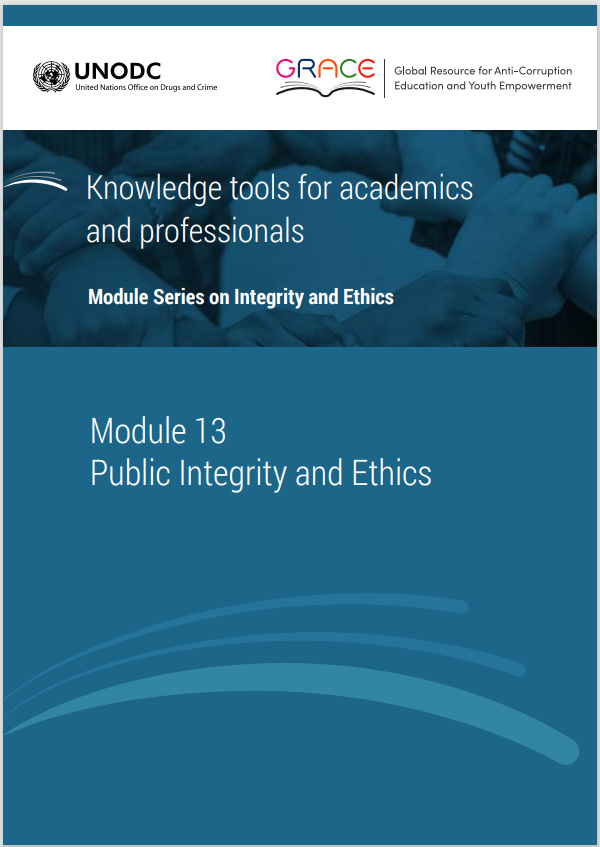This module is a resource for lecturers
Possible class structure
This section contains recommendations for a teaching sequence and timing intended to achieve learning outcomes through a three-hour class. The lecturer may wish to disregard or shorten some of the segments below in order to give more time to other elements, including introduction, icebreakers, conclusion or short breaks. The structure could also be adapted for shorter or longer classes, given that the class durations vary across countries.
The time slots below indicate the time needed for 20 person classes. If the class size is considerably larger and the lecturer decides to use the large-group techniques described at the end of the sections, more time is necessary for those parts.
Ice-breaker: opening reception on values (10 minutes)
- Introduce students to the topics addressed it the Key Issues section of the Module and explain the interactive teaching method.
- Conduct Exercise 1.
Civil servant as a temporary steward (10 minutes)
- Present the five core values from Table 1: Public Service Core Values and Action Principles (see Key Issues section of the Module). The lecturer can distribute a handout with the table or show it on a PowerPoint slide.
- Explain the concept of the "Temporary Steward".
- Ask students whether an important public value or principle is missing from the table.
- Facilitate a discussion around the students' responses.
Ethics Codes for Public Servants (30 minutes)
- Explain the role and content of ethic codes and conduct Exercise 2.
Public integrity (40 minutes)
- Conduct Exercise 3: screen the video and lead a discussion.
- Building on the discussion of the video scenario, explain that public integrity requires more than having ethical staff members. The operation system of public organizations, as well as their integrity management system also matters.
Structured ethical reflection of case study (20 minutes)
- Prepare chairs according to the description of Exercise 4.
- Explain the rules of the process before presenting the case study.
- Present Case Study 1 or another case dilemma, such as those available from Ethics Unwrapped.
- Discuss the students' positions on the ethical dilemma.
- Discuss the students' views on the process and record their reflections on a board or flip chart (call your notes "Dialogue").
Strengthening public ethics and integrity (40 minutes)
- Discuss the instruments for building an ethical environment drawing on the relevant discussion in the Key Issues section of the Module (e.g. oath, induction training, code of ethics, dilemma discussion, discussion of new rules, internal policy workshops).
- Show your "Dialogue" notes from the previous discussion, and ask the group which of the listed ideas are relevant for building an ethical culture in organizations (e.g. creating safe space; sharing and understanding diverse interpretations; discussing consequences of decisions; experiencing emerging consensus).
- Divide the students into small groups and assign each group one instrument for building an ethical environment. Ask students to discuss two issues: (1) How can you use this instrument in a public organization? (2) What is the impact of the instrument on the integrity of the organization?
- After 15 minutes the group representatives present the results to the larger class.
Obligations of public servants (30 minutes)
- Using the format in Exercise 4, facilitate a discussion around Case Study 2.
Optional closing exercise if time allows: reception on public values
- Repeat Exercise 1 but this time ask the students to write on the card the public value they feel most strongly about, instead of their chosen personal value.
- Have students discuss with their peers the reasons for their selected public value.
- After 10 minutes, hand out to the students the cards from Exercise 1, and ask them to quietly compare their 'Public Values' card with their 'Personal Values' card from Exercise 1.
- Allow them time to reflect, but do not make any comments. At this point it is better to leave the students to share the last words and only thank them for their active participation.
 Next page
Next page
 Back to top
Back to top
